| Columns Retired Columns & Blogs |
Anyone still using these classic spinners?
I checked the AC voltage from chassis ground to main (house) ground to determine the correct line-cord orientation (footnote 1). The Prism II measured 11.5V with the correct orientation (12.5V the other way—an insignificant difference). I checked the player's tracking with the dropout tests on the Pierre Verany Digital Test CD. The Prism II mistracked when the dropout reached 3.0mm, though with a slight glitch at 2.5mm. The CD standard only requires tracking of a 0.2mm gap, although theoretically the error-correction codes make regeneration of gaps of up to 2.47mm possible. Only the Philips and the Prism II approached or met this theoretical potential.
The frequency response of the Prism II (fig.1) was virtually flat, with a few high-frequency ripples characteristic of Philips-based machines. However, its de-emphasis error shows a slight deviation (fig.2)—not serious in itself but affecting a broad band of the lower treble. This should be mildly audible on pre-emphasized discs. Its crosstalk (fig.3) was excellent up to 1kHz, deteriorating slightly at higher frequencies. Separation remained greater than 100dB up to 1kHz, dropping somewhat at higher frequencies but remaining greater than 80dB up to 16kHz (the limit of our tests).
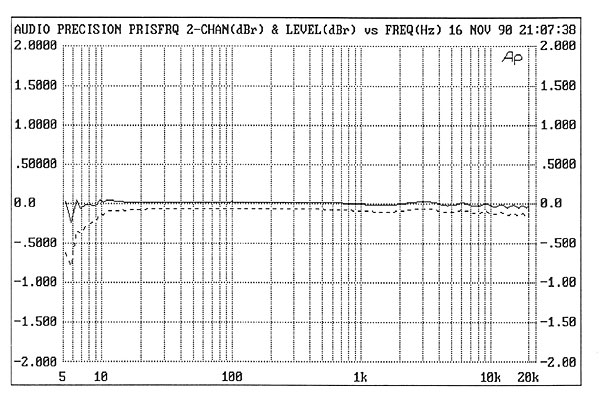
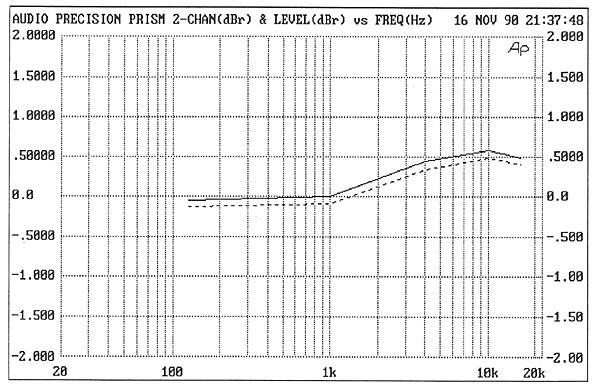
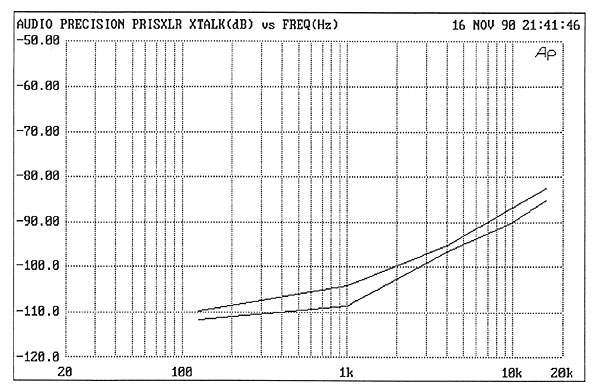
The spectral analysis of a –90.31dB dithered 1kHz sinewave (fig.4) indicates some noise in the bass and lower midrange, but all of it below –100dB. As with the CAL player, signal-related harmonics are very low in level, implying good linearity. The Prism II's departure from a truly linear behavior at low levels is shown in fig.5 (only the left channel is shown—the right channel was very slightly superior), and indicates a somewhat better performance than the California Labs Aria III, although its deviation is in the opposite direction.
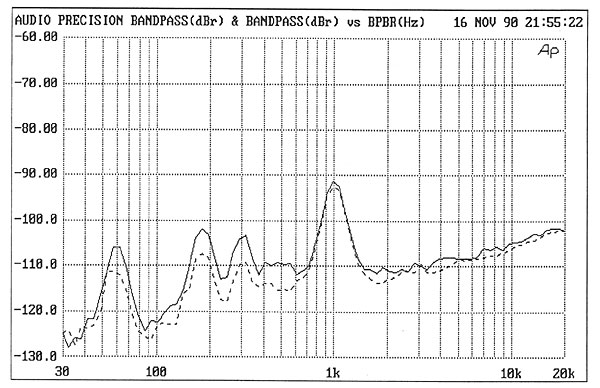
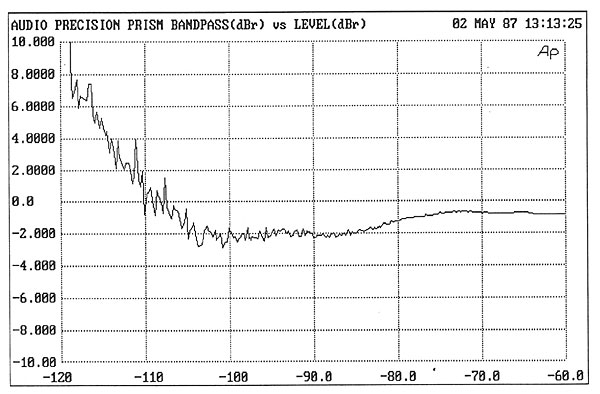
However, the Prism offered relatively high levels of intermodulation distortion measurement at high recorded levels, which might tie in with my feelings concerning its sound. The cursor position in fig.6 shows the IM difference product at 1kHz to be just 48dB down from the level of the 19 and 20kHz test frequencies, the latter also surrounded by a number of 1kHz-spaced IM products. To investigate whether or not this might be due to the unusually high output of the Prism's fixed outputs, I reran the test at a –6dB setting from the variable outputs, with almost identical results.
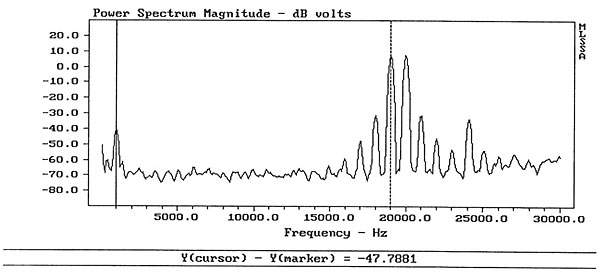
The Mod Squad Prism II was non-inverting. The output impedance of the Prism II was 100 ohms from its fixed outputs and just under 3 ohms through its variable outputs. While the latter, plus the Prism II's high output level, would indicate its suitability for preamp-less operation using the volume control of its variable outputs to set the gain, its rather coarse steps (3dB at a clip), plus the lack of any visible indication of the volume setting, make this a questionable proposition. The low output impedance and high level of the fixed outputs, however, make the use of the latter in conjunction with a passive line stage a practical consideration.—Thomas J. Norton

Anyone still using these classic spinners?

How funny - I was just thinking the same thing when I was reading this!